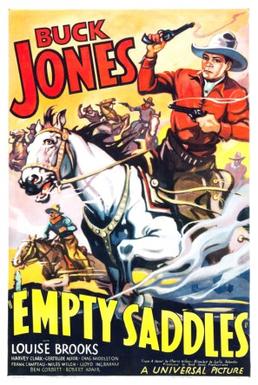
NEVER A DULL MOMENT WHEN THE THREE MESQUITEERS ADD THRILLS & CHILLS TO THE DRAMA OF THE WEST! (1938 print ad tagline)
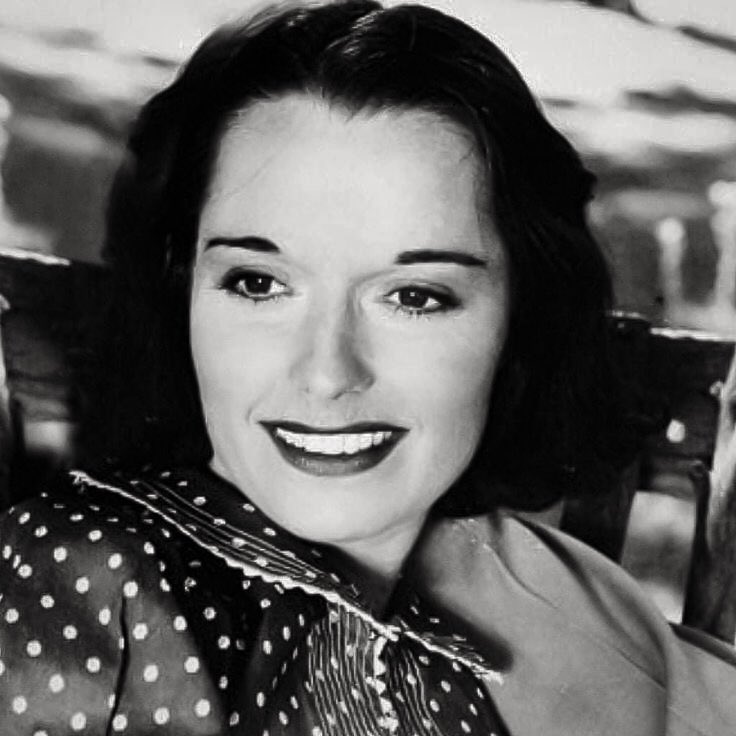
LOUISE BROOKS IN 1936
By 1936 Louise Brooks was at the end of her road. Less than a decade earlier she had been the glamorous, high-flying, hard-partying toast of Europe and now she was virtually unemployable. In 1929 she had stomped out of Hollywood in a huff during contract renewal negotiations and took an offer from German director GW Pabst to take the lead role in his planned version of "Pandora's Box", a notorious play by the equally notorious Frank Wedekind (which had already been the subject of four previous attempts (which I've written about here) which was followed by another Pabst film "Diary Of A Lost Girl" (another remake) followed by a French film "Beauty Prize". While not exactly huge commercial successes these films fascinated critics as did Louise who seemed to have Europe at her pretty feet. Pabst had plans for her and begged her to stay in Europe but she was homesick, missing her wealthy American boyfriend and given that talkies were now standard and Louise spoke only English she hopped on a ship and returned home. She was not exactly welcomed with open arms by the studio she had had so casually walked out on but she was offered some chances. When she had left Hollywood she had just wrapped up filming her parts on "The Canary Murder Case", one of those vaguely "based on a true story" crime film (which I've also written about here) starring William Powell as detective Philo Vance which had been filmed as a silent and then shelved when talkies came in. The imposition of talkies had presented studios with the question of what to do with the unreleased or unfinished silents they still had in the can. In the case of "The Canary Murder Case" it was decided that the film could be salvaged with a mixture of fairly extensive reshoots and overdubbing other scenes. Thus Louise was offered the chance to come back and do the overdubs, however the ever willful Louise was as yet not terribly interested in returning to Hollywood. She later claimed to be offended by the low-ball offer, insulted that she was expected to do a vocal audition ("I have a perfectly lovely voice") and miffed that they had allowed her to leave in the first place without the offer of a raise but friends later gave their opinion that she was simply more enamored with her rich boyfriend George Marshall in New York and not interested in returning anyway so she once again flounced off leaving the studio to hire Margaret Livingston to dub her voice parts. Louise would then have the nerve to be miffed about the quality of the dubbing claiming that she would have done a better job. Not that she was wrong mind you. Louise would eventually change her mind and return to Hollywood where she had to accept supporting roles in a few lesser comedies until she got another offer for a role in a major film in a Jimmy Cagney gangster film "The Public Enemy" but with her unerring talent for bad judgement she turned that down as well. This last snub effectively ended her career although she didn't know it yet. Aside from a couple of minor supporting roles she would never again be offered a serious role in a major production. Finally she belatedly realized she was in no position to be picky anymore and was now ready to accept roles she had turned her button nose up at just a few years earlier.
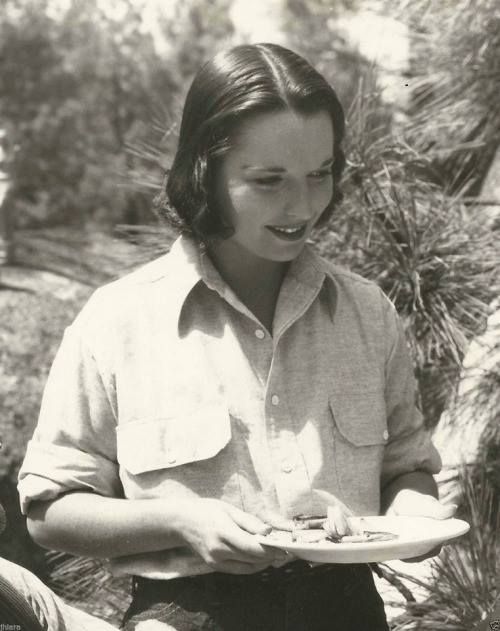
One such rejected role was in the Poverty Row western studio circuit. The silent era Western Epics of William S Hart and Thomas Ince Westerns had been major productions which were treated as respected artistic works, especially in Europe. However in the sound era they had become low budget assembly line Oaters produced by shoe-string studios like Republic, Mutual, Tiffany and Monogram referred to as Poverty Row with cookie cutter plots, cardboard characters and plywood sets fired off in a couple of weeks for an audience made up of the rural and working class and kids. This audience may not have been very demanding but they were loyal to their own stable of stars that included the more-or-less interchangeable likes of Ken Maynard, Art Accord, Jack Hoxie, Tom Tyler, Hoot Gibson and Johnny Mack Brown and the odd genre of Singing Cowboys Gene Autry, Roy Rogers, Tex Ritter, Spade Cooley and even the odder genre of Black Singing Cowboys Herb Jeffries (who I wrote about here) and once even Louis Jordan (who I wrote about here). One of these stars was Buck Jones, a veteran who had been making Oaters since 1920.
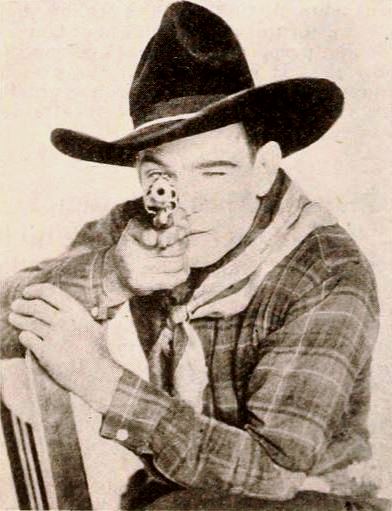
BUCK JONES
Like many other early Cowboy stars including William S Hart, Tom Mix and Art Accord, Jones had a genuine background as an adventurer. Born in 1891 he had worked as a cowboy, served in the Army during the Philippines War, trained as a pilot and raced cars all before heading to Hollywood to work as a stuntman by 1914 and getting his first starring role in 1920. He was one of the bigger Cowboy stars in the silent era and was able to continue into talkies. Like many Western stars he had genuine cowboy roots and could convincingly ride and do his own stunts and having a gruff baritone had adapted to talkies easily enough even if the pay and public and critical acclaim was considerably less than in the silent era heyday. Jones had also branched out into a radio series, comic books and various toys and merchandise.
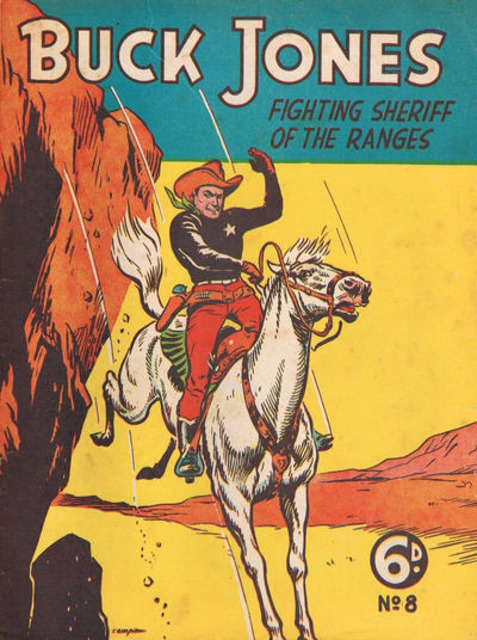
Buck Jones had had his eye on Louise for a while (not a surprise really) and had previously offered her a role upon her return from Europe only to be brushed off. Louise had obviously made some self destructive career decisions and turned down some good chances but this was not one of them. Besides the low standard pay of about $300 a week she did not want to risk being typecast appearing in Poverty Row Westerns, a sure sign her high flying days were over. She was not then entirely sure she even wanted to continue in Hollywood but if so certainly not as a lowly contract player in low budget oaters. However by 1936 she was broke and finally realizing her career was in shambles and willing to take roles she would have sniffed at before so when the affable Jones gave her another offer she took it.
"EMPTY SADDLES" (1936)
Directed by Lesley Selander
Cast;
BUCK JONES ~ Buck Devlin
LOUISE BROOKS ~ Boots Boone
HARVEY CLARK ~ Swaps Boone
CHARLES MIDDLETON ~ Cimarron White
LLOYD INGRAHAM ~ Lem Jessup
GERTRUDE ASTOR ~ Eloise Hayes
Plot synopsis (spoiler alert); Buck Devlin (Buck Jones) is looking to buy an apparently abandoned ranch to turn it into a dude ranch. We know the ranch, named "The Ranch Of The Empty Saddles" is haunted as at the start we see a ghostly cowboy wander about. Devlin hires Swaps Boone and his daughter Boots (Louise) to help run the place along with some unemployed cowhands and a cowboy string band. When wealthy guests arrive from the East they find themselves in the middle of a turf war between the cowboys and sheep ranchers during which one of the cowboys is shot and wounded forcing Boots to take care of him. Boots is unhappy at the ranch and talks of leaving but Buck and her father talk her out of it. Boots overhears a plot by the outlaws to dynamite the ranch house and rides off to warn Devlin while the outlaws try to intercept her leading to a confusing gunfight and Boots being kidnapped. This leads to Devlin riding off to rescue her. Devlin catches up with the outlaw and rescues Boots after a fist fight. The next day Boots boards a train to leave town but Devil rides after her and she jumps off the train and they ride off together to live happily ever after.
========================================

Unlike the silent Westerns of William S Hart and Thomas Ince which were reasonably authentic and gritty, B-movie westerns of the 30's and 40's existed in a strange fantasy world where technology, fashions and music of the Victorian Era lived alongside those of the contemporary times and horse and buggies could share roads with automobiles and occasionally planes and cowboys wearing six shooters could use telephones and radios. The heros wore stagey cowboy costumes out of Wild Bill Hickok's "Wild West Show" with oversize hats and immaculate tight outfits and six-guns while the women might wear modest pioneer dresses or contemporary dresses and other male characters, especially villains, might wear the fedoras and pinstripes of a Film Noir gangster.
All this looks incongruous to modern eyes but seems to have been accepted by audiences at the time. Other expected tropes included buffoonish comic relief that was almost never funny and extended musical numbers that pop at the slightest pretext or no pretext at all. Heroes like Buck Jones, Gene Autry or Roy Rogers were blandly handsome with perfectly slicked back hair, spotless costumes of western shirts, tight pants, spotless boots and white stetsons. While some, like John Wayne or Tom Tyler, were tall and athletic others like Buck Jones had gone somewhat to seed with slightly paunchy dad bods and looked distinctly uncomfortable trading punches. The violence was usually as bloodless as a Three Stooges slap fight with less energy and the romance as chaste as a Lil Rascals short.

This film was shot in a week which was a short schedule even by poverty row standards but it appears to be stitched together from random parts of other B-westerns and is completely incoherent. B-Movie westerns of the 30's were usually predictable; usually some banker or wealthy rancher threatening to foreclose on a poor rancher or widow or rustlers menacing a poor independent rancher or widow, but this one at least does make an attempt at a different plot involving our hero buying a haunted ranch but this odd if promising plotline is then dumped and never mentioned again. The turf war makes little sense, the fight scenes are confusing, more so for being shot at night thus making sure we have no clue who is who. The direction is lazy and equally confused. Like many B-Westerns there is music with the Dude Ranch having a band which seems to be a fairly typical (if mediocre) Old Time Country String Band of the era but the leader speaks with a thick Italian accent and long passages actually have no music at all making them seem even slower moving. The easy-going Buck Jones is bemused throughout as if he doesn't understand the point of all this silliness either while the usually beguiling Louise spends much of the movie alternating between being bored and annoyed. Even her normally luminous smile seems forced, which it probably was. She also looks completely unrecognizable having ditched her trademark black helmet and bangs hairdo in favour of a more plain modern style but she also seems to have gained a few pounds and her face appears softer. Her outfits are not flattering and in a couple scenes she wears oversize jeans (unusual for the time) which make her look rather boyish. While this is objectively a pointless and inferior example of a genre with already low standards all is not lost with Louise however. It is clear that when Louise bragged that she had a fine voice she was not wrong. Her well modulated and clear diction did indeed record perfectly fine. Besides having little to do as a further annoyance she was not allowed to do any of her own horse riding although with her Kansas childhood she claimed she was capable of doing so and a stunt double was used instead which may explain her drab, boyish clothes. Perhaps the studio had insurance concerns but maybe Louise's riding skills just weren't as strong as she insisted.

LOUISE & BUCK JONES
As a trivia note this film, like many of Buck Jones' films, was actually written by a woman, Frances Guihan, who had started out as a screenwriter as early as 1916 before ending up paying the bills in quickie westerns after talkies hit. She seems to have dashed this one off pretty perfunctory. The film got poor reviews and was ignored by the public although it did result in Universal Studios releasing a press statement attributed to Louise in which she says;
"I feel that my career is just beginning and practically all of the rest of the time was wasted. I am delighted with my role in "Empty Saddles". It gives me an opportunity to do something, not just stand around and look pretty. I wouldn't trade it for all the other roles I ever had because I am really acting now, not just being an ornament and I feel like at last I am on the road toward getting some place in pictures."
Louise got the standard supporting player fee of $300 per week which is how long the shoot lasted and this statement is so at odds with the shabby quality of the film and what we know about her actual attitude as to be laughable and it is almost certainly entirely made up.
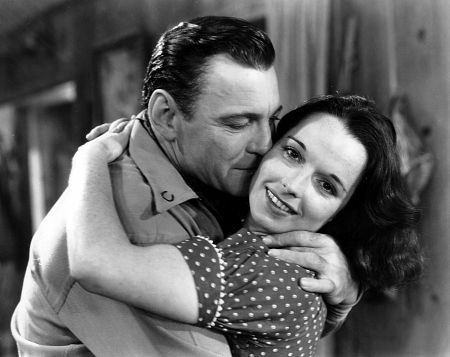
Jones had reportedly been enamored of Louise for some time but if he made a play for her she never mentioned it later as she probably would have and in fact she later said little about the film at all. While this film was an obvious let down from her earlier work and can not have been a happy experience for her it does appear whatever her later denials Louise was still not yet willing to give up on Hollywood and whatever the forgettable quality of this film it did get her an offer to do another Western, this time for Poverty Row mainstay Republic Pictures and part of an existing franchise series starring stars of the genre, the Three Mesquiteers.
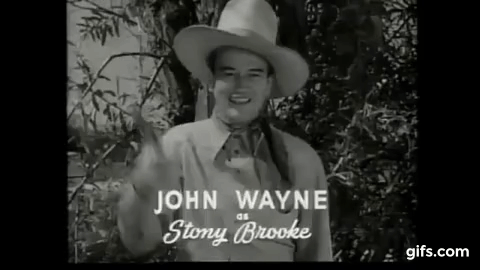
The Three Mesquiteers were actually a revolving set of actors starring in a series of low budget Westerns featuring the likes of John Wayne, Ray Crash Corrigan, Max Terhune, Duncan Renaldo, Bob Steele and Tom Tyler as the titular trio that ran to a remarkable fifty-one movies between 1936-1943. They were fairly typical B-Westerns of the era but they were noted as being better than the average due to having a higher level of energy and star power and they were among the most popular of the genre. Ray Crash Corrigan was one of the original Mesquiteers while John Wayne joined in 1938, both were already veterans of the genre and were of the tall, clean-cut, broad shoulders and athletic hero type giving the audience two for the price of one while while the third Mesquiteer, usually chubby Max Terhune, was the loyal Sancho Panza comic relief sidekick. By this point John Wayne had been in Hollywood since at least 1926 doing various bit parts and making ends meet as propboy and riding double. A six foot tall former football player he found work on Westerns where he caught the attention of stars Tom Mix and Buck Jones whose style he emulated as well as directors John Ford and Raoul Walsh who gave him his first big break as the lead in the first big budget sound Western "The Big Sky" in 1930. The twenties had seen the epic Westerns of William S Hart and Thomas Ince, known for their relatively realistic look and dark gritty style but these had fallen out of style by the end of the decade in favour of the more cartoonish action filled films of Tom Mix, Bob Steele, Ken Maynard and Art Accord which were not only more popular but also cheaper to make. "The Big Sky" was an attempt to make a sound version of the Western epic but it was only a middling success and Wayne would have to spend the next several years doing B-Mvies as there was little studio interest in a big budget Western in the early thirties. Instead the stetsons would be taken up by the low-budget Poverty Row studios like Republic and Monogram who churned out hundreds of standard quickies starring the likes of Maynard, William Boyd (Hopalong Cassidy), Ray Crash Corrigan and Tom Tyler along with the oddly popular sub genre of Western Musicals starring Gene Autry and Roy Rogers. These films were usually added as openers to a double feature or in weekend matinees where they were popular enough with working class and rural audiences but earned a devoted audience among children who bought from an array of merchandise from toys to hats and t-shirts to lunch boxes as well as some branching out into comic books and radio. Wayne spent the rest of the decade making highly successful B-Westerns which were popular thanks to Wayne's quirky screen presence and voice and his physicality which allowed him to do more realistic fights, stunts and horse riding scenes. The Wayne films, while usually following the same cliche formulas generally also maintained a higher level of action and a faster pace with plenty of chase scenes, fights and shootouts, however bloodless they might be.

The Three Mesquiteers took the basic formula and added another co-lead hero as well as a comic relief sidekick and were highly successful throughout the decade starting in 1936 starting with Bob Livingston, Corrigan and Terhune with Wayne replacing Livingston in 1938. Original Mesquiteer Ray Crash Corrigan had a unique career starting off as a stuntman he soon specialized in playing giant apes in Tarzan and Flash Gordon films (he even had his own gorilla suit) before getting his own lead role in a popular serial "Undersea Kingdom" which was basically Flash Gordon without the spaceships and taking the name Crash Corrigan. This soon got him cast as one of the Mesquiteers. As a former stuntman he was athletic and could convincingly ride and fight. Max Terhune was a chubby former vaudeville and medicine show performer who did a variety of comedy bits; card tricks, rope tricks, juggling, whistling as well as ventriloquism (poorly) including having his own doll named Elmer which he managed to insert into various films.
Contrary to today's popular assumptions the Bad Guys in these films were usually not hostile Indians or Mexicans (although that was possible) but instead were typically greedy capitalist bankers and wealthy ranchers (more relatable villains to an audience of white working class and rural folk during the Great Depression) or various outlaws. These films also typically needed a comely yet feisty damsel in some sort of distress and while that was hardly Louise's usual role, "Empty Saddles" had proven that she was game enough, not to mention desperate enough to do it.
"OVERLAND STAGE RAIDERS" (1938);
Directed by George Sherman
CAST;
JOHN WAYNE ~ Stoney Brooke
RAY CRASH CORRIGAN ~ Tuscon Smith
MAX TERHUNE ~ Lullabye Joslin (and Elmer)
LOUISE BROOKS ~ Beth Hoyt
ANTHONY MARSH ~ Ned Hoyt
JOHN ARCHER ~ Bob Whitney
ARCH HALL SR ~ Joe Waddell
Plot Synopsis (spoiler alert); Set in the same more-or-less modern West as "Empty Saddles" the film opens with a modern bus being held up by Wild West Outlaws riding horses and brandishing six shooters. The Outlaws are robbing the buses for the gold shipments being transported from a nearby mine. Next we see two of the Mesquiteers, Tuscon Smith and Lullabye Jospin (Corrigan and Terhune) riding to meet Stoney Brooke (John Wayne) when suddenly they spot a small plane overhead when a parachutist jumps out. Reaching the ground they discover the jumper is actually Stoney Brooke who tells them he has spotted another bus robbery about to happen and the trio race off to intercept which they do, driving off the Outlaws and saving the gold. The Mesquiteers pick up a reward and Stoney suggests to the mine owners that instead of shipping the gold using the buses they instead use the plane which is owned and flown by Ned Hoyt and run with his sister Beth (Louise). The Hoyts are broke and on the verge of shutting down and leaving so Stoney suggests that the Mesquiteers use their reward money to invest in the airline and they line up a few more investors from the locals. Joe Waddell is a local former pilot who had lost his wings after a plane crash and is now working as the ground radio operator and he asks Beth for a co-pilot's job and she promises to ask the others but when Whitney, another pilot who is an old friend drops by she hires him as copilot instead which leads to resentment from Waddell. Meanwhile Whitney, the owner of the bus line sees the new airline as a rival and decides to sabotage it. He has been working with the Outlaws all along. The Outlaws hijack a train and the Mesquiteers who lead a posse after them catching the train and foiling the robbery yet again. The Outlaws next hijack the plane, piloted by Hoyt which is carrying passengers and gold, shooting Whitney and forcing the passengers to bailout using the parachutes. Hoyt tries to radio for help by Waddell who is manning the ground radio on the hijacking and does not relay the message. However before they can fly away Ned Hoyt drains the gas tank forcing them to make an emergency landing.
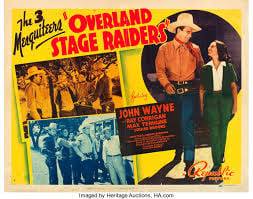
Beth reveals that the Hoyts have been using a fake name, their real name is Vincent and Ned is a former outlaw who served time in prison. Stoney says he already knew but did not tell the others. Hoyt is accused of being in on the hijacking but Stoney defends him and promises to get to the bottom of things. Meanwhile the outlaws manage to call radio Waddell and tell him that they are grounded and in need of fuel which he passses on to Jessup who sends out more outlaws to deliver the gas by horseback. After interviewing the passengers Stoney figures out Waddell is in on the hijacking and sets a trap and catches him and gets the location of the plane. The Mesquteers tie up Waddell and ride off to intercept the gas delivery; this leads to a chase and gunfight as the Mesquiteers capture the bandits and ride off to find the plane. Back at the airstrip Beth finds Waddell and not knowing he is one of the outlaws unties him and he escapes locking her in the cabin and riding off to warn Whitney who gathers his bandits and rides off to find the airplane. They arrive to find the Mequiteers already there and a gunfight ensues in which the Mequiteers prevail, the Bad Guys are arrested and Hoyt is rescued. Back at the airstrip the gold is returned and Ned and Beth will be able to pay off their bills and stay in business. Finis.
=====================================
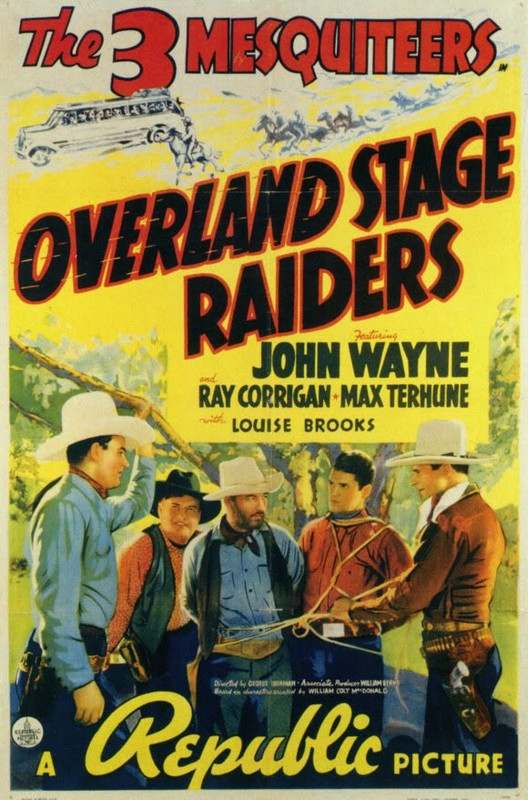
This film, while still silly, is at least more coherent and competent than "Empty Saddles" and has more energy although that is a low bar. John Wayne may not do very much but he has some of his distinctive screen presence and confidence. Crash Corrigan is blander by comparison while Max Terhune is marginally less annoying than the usual comic relief sidekick aside from one awkward scene in which he brings out his dummy Elmer for no apparent reason other than to show he is possibly the least convincing ventriloquist ever. While not showing any visual flare the film is more briskly directed and the action scenes make more sense although there are a number of scenes of cowboys riding furiously to and fro which seem to be added to pad things out. Speaking of which, the train robbery scene while competently shot has nothing to do with the rest of the plot and seems to have been tacked on to add more action and give John Wayne a chance to jump onto a moving train.
As for Louise she is given little to do other than be an occasional romantic foil for Wayne and her role is really superfluous but she seems less ill at ease and while no longer having her usual mesmerizing charisma is not without some trace of her genuine screen presence. She also looks better than last time. Although she is basically unrecognizable from the girl who dazzled Europe with her hair grown longer in a Lana Turner do while keeping some of the lusterous sheen of old and her seeming to have lost a few pounds. She is still beautiful, in fact she now looks remarkably like Veronica Lake which is a little ironic as Lake would star in "Sullivan's Travels" (1941) which was basically an update on one of Brook's earlier classics "Beggars Of Life". Her outfits are also better running to trim form-fitting 1940's dresses and a pair of fetching jodhpur riding breeches and boots.
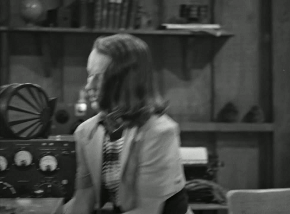
Once again she earned the standard $300 per week fee for a shoot that lasted a week or two and she managed to be on her best behavior and seemed to have gotten along with the rest of the cast and even admitted to being smitten by John Wayne who she described as; "This is no actor but the hero of all mythology miraculously brought to life...Now for the first time I beheld a Duke born to reign. John was in fact what Henry James defined as the greatest work of art, a genuinely beautiful being".
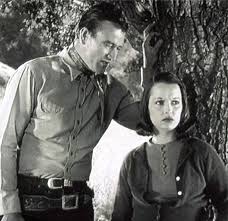
At this point Louise could have easily kept doing Westerns. She almost certainly would have been offered a contract with one of the Poverty Row studios and while it would not have been very prestigious work it would have at least paid the bills and would have provided steady work for a few years until, well something turned up. However she seems not to have considered it. While she was later photographed at a wrap party happily mingling she soon decided she had had enough of Hollywood. She had starred in some prestigious films and had a taste of the Hollywood and Weimar highlife and scraping the bottom of the Poverty Row barrell wasn't for her. She packed up and headed for New York with some vague idea of restarting her previous career as a serious dancer but after that failed and aside from a short and somewhat ironic stint as a radio voice actor her showbiz career was truly over at age thirty.
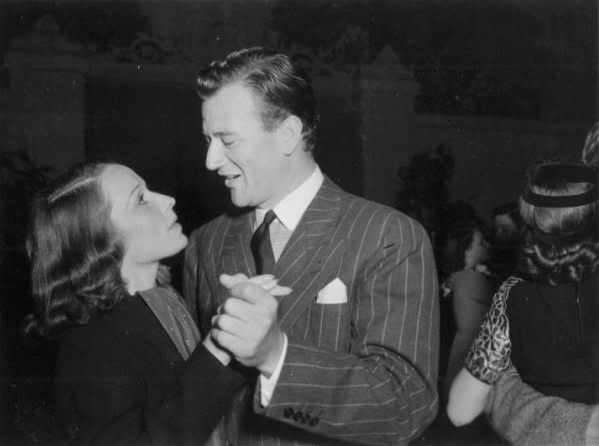
LOUISE & JOHN WAYNE AT THE WRAP PARTY
John Wayne on the other hand was headed for bigger things as within months John Ford cast him in "Stagecoach '' a film designed to bring back the epic Westerns of William S Hart. Ray Crash Corrigan had the oddest showbiz career arc of anyone as he would continue making B-Westerns for some time and when those dried up in the 1940's he reverted to his earlier career donning his old ape costume appearing in B-Monster films like "The White Gorilla", "White Pongo", "The Monster Maker", "The Killer Ape" and the self explanatory "Bela Lugosi Meets A Brooklyn Gorilla". His final film role was in the genuine cult classic "It! The Terror From Out Of Space" (1958) in which he played It. After retiring his Gorilla suit he bought his own cowboy film set and opened it as an amusement park and dude ranch called Corriganville Park where he teamed up with his old partner Max Terhune to regall greenhorn tourists with tall tales and perform gun and rope tricks. He died in 1974 aged 74. As for Terhune after the decline of these types of B-Westerns he worked as an extra and performed as a magician doing card tricks at the Magic Castle besides performing at Corriganville. He died in 1973 aged 82. Arch Hall Sr, who played Joe Waddell, would go on to a career as a director and producer of even lower budget Z-Movies in the 1950's drive-in theatre Teen Explotation era starring his son Arch Hall Jr including such notorious anti classics as "Eegah", "The Choppers" and "The Wild Guitar", he died in 1978.
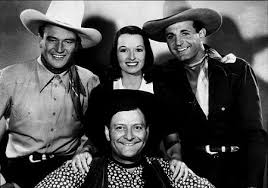
LOUISE & THE THREE MESQUITEERS
There would be no long decline or retirement for Buck Jones in 1942 he was a guest at the famed Cocoanut Grove nightclub in Boston when a fire broke out with most of the guests trapped inside as management had locked some of the fire exits. In the resulting disaster 492 people died among them Buck Jones who died later in hospital. The circumstances of his death were unclear with some accounts saying that Jones (who had reportedly been serving as a guest MC) taking to the mic to urge calm and afterwards his widow claiming that Jones had made it out of the club but went back in to rescue survivors only to be overcome. John Wayne, who would always name Jones as one of his idols, would repeat this account for years but modern research shows this was unlikely. He was in fact found unconscious under his table overcome by smoke as were many guests, perhaps he did delay fleeing to direct others out but it's likely he was overcome by the choking, blinding smoke before he had a chance to try and find an exit. It's also possible in seeing the hellish chaos inside the blazing inferno as frantic terrified guests piled up against the locked doors he tried to grab shelter by keeping low, taking whatever shelter he could desperately find until the smoke found him. In the end he suffered serious burns and smoke inhalation and died two days later, he was 50.
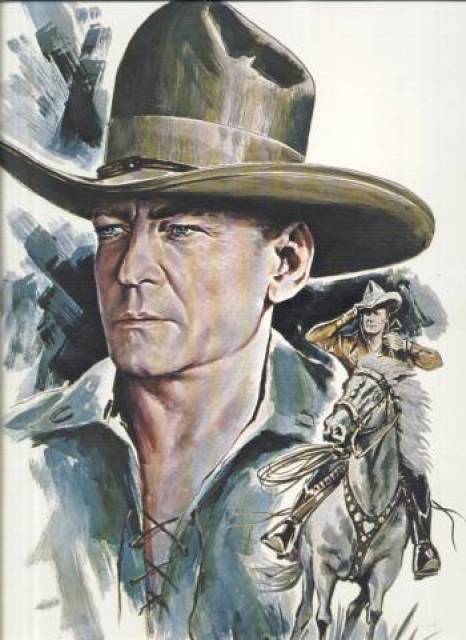
BUCK JONES

No comments:
Post a Comment